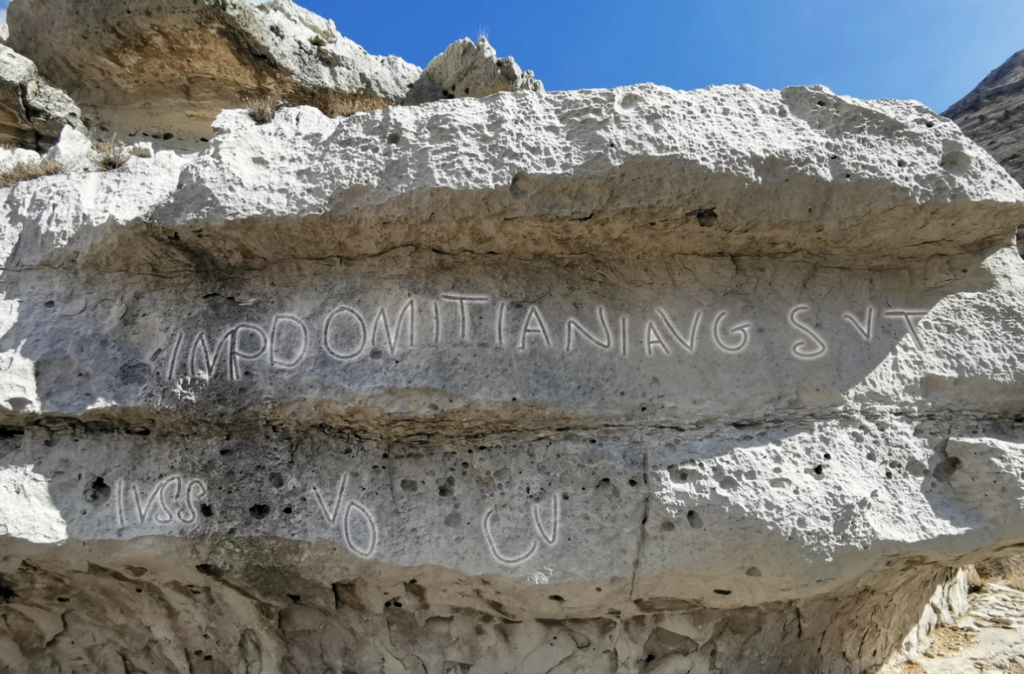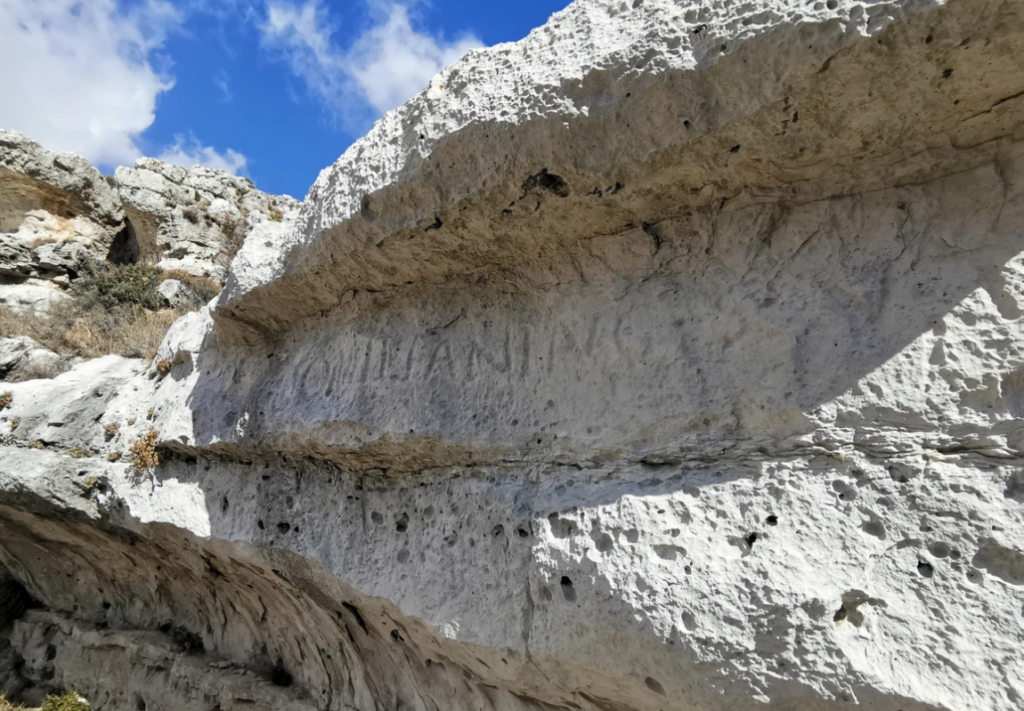El Aaqoura features a unique and mysterious inscription carved on a rock, at a location known as Darjét Mar Semaan.
Toponym
Darjét (staircase) Mar Semaan (Saint Simeon) is the designation given to a rock-cut staircase that date back to antiquity. The designation derives from the name of St. Simeon chapel (Knisét Mar Semaan) located at the foot of the staircase.
Inscription
The inscription is engraved on a kind of natural architrave formed of three rock layers:
First line – IMP DOMITIANI AVG SVT, which stands for IMPeratoris DOMITIANI AVGustus SVT.
Translation – Emperor Domitianus Augustus SVT (SVT is still an unidentified abbreviation by scholars).
Second line – IVSSV…O….CV….
While some letters are damaged due to erosion, one scholar suggested the following inscription based on the visible letters – IUSSU DPS, which stands for IUSSU et Pecunia Sua.
Iussu refers to a certain person, an occasion or a motive to which a dedication has been made, while et Pecunia Sua refers to the cost of the works accomplished.
Based on this hypothesis, the second line commemorates the occasion or work performed under Emperor Domitianus rule (1st century AD), as well as the cost.
Importance
The Darjét Mar Semaan inscription is the only inscription found in Lebanon attributed to Emperor Domitianus.
What is mysterious and intriguing about the inscription is its meaning in relevance to its location, leading to several hypotheses suggested by scholars and explorers since the mid-1800’s.
The first theory was suggested by French explorer Ernest Renan who considered that Darjét Mar Semaan is one of the oldest roads in the world, and the main one that links Byblos and Baalbek through the upper valley of Nahr Ibrahim and the plateau of Aakoura.
The second theory debated by modern scholars describes the road as secondary way of communication, and not a main one, since its width and shape limit greatly the movement of caravans, animals and large amount of people.
The third theory, which is recent, suggests that the road had a role to facilitate the transportation of rock blocks cut from the quarries of the Aakoura mountains. However, this does not rule out the existence of a road linking Byblos to Baalbek through Aakoura, but assumes that this one does not probably pass through Darjét Mar Semaan.
Hence, it is open to question whether the Domitianus inscription does not rather refer to a form of imperial control or taxation for the exploitation of the quarry, as did in a way, Hadrian’s forest inscriptions for four species of trees which the Roman administration wished to reserve to itself from exploitation (Check the Hadrian inscriptions of Ehmej and Tem el Qoubour for more information).
Further studies and excavations may reveal the true meaning and importance of the Domitianus inscription.
Karim Sokhn
Tour Operator & Tour Guide
References
Latin Epigraphy: An Introduction to the Study of Latin Inscriptions, John Edwin Sandys, P. 88
Darjet Mar Semaan à Aaqoura (Mont Liban), Voie de communication romaine ou chemin de carrière ? Lévon Nordiguian



